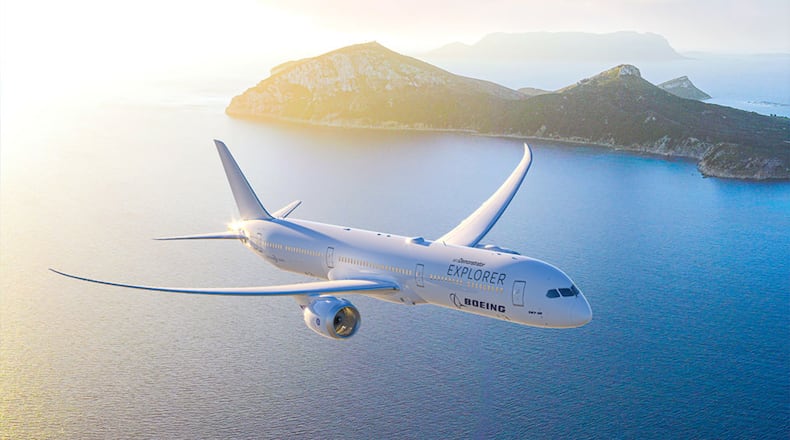The kicker: Sustainable fuel works just as well as conventional “Jet A” fuel, which is derived from kerosene.
“Performance-wise, in terms of how our engines run, it really doesn’t make a difference,” said Cassandra Miller, a senior staff engineer for GE Aerospace. “The combustion process should really be the same.”
Miller said in a Dayton Daily News interview the new research project involves some of the biggest names in aerospace — her company, Boeing, United, NASA, the University of Dayton Research Institute (UDRI) and others
GE Aerospace and the UDRI will work with Boeing and NASA (and others) to study sustainable aviation fuel via aerial contrails — the condensation plumes that trail behind planes.
A Boeing ecoDemonstrator Explorer, a 737-10 destined for United Airlines, will fly with 100% sustainable fuel, with conventional jet fuel in separate tanks during testing, GE said.
“Really, the key to this is our engines are on the 737-10,” Miller said. “That’s the aircraft United has kind of loaned for this program. And the NASA aircraft is flying behind it and collecting a whole bunch of data.”
Credit: Justin Knight
Credit: Justin Knight
The project will try to quantify what’s in the contrail pluming from a plane fueled with SAF (“sustainable aviation fuel.”)
The questions the project is trying to answer: “Fundamentally, is there a difference between Jet A, which is what the industry has been running on forever, and sustainable aviation fuels when it comes to emissions? Is it cleaner ... does it behave differently in the atmosphere?”
NASA’s DC-8 Airborne Science Lab will fly behind the commercial jet and measure emissions produced by each type of fuel, the companies said.
The DC-8 will measure the air in the contrail and outside it, gauging particulate matter, ice crystals, humidity, sulfur and more.
The goal: Better understand how certain fuels, engine combustor designs and other technologies affect air quality.
If emissions are different between Jet A and SAF, “it might have a pretty big impact on the overall environmental story of aviation,” Miller said.
“What’s really cool about this is our newer engines are being designed in mind for these sustainable aviation fuels, for the synthetic fuels, so that going forward, we will be able to run on 100% (SAF),” she added.
In this campaign, the research plane whose emissions will be studied will run on 100% sustainable aviation fuel, she said
SAF — admittedly an all-encompassing term for a number of synthetic fuels — is used today only when it’s blended with conventional jet fuel.
A distinct disadvantage at the moment, however, is that SAF is more expensive than traditional fuel.
“Right now, the cost of sustainable aviation fuel on its own without any incentives, if you will, would cost maybe four or five times that of existing petroleum fuels and that’s not sustainable for the industry,” Valerie Reed, director of the bioenergy technologies office at the Department of Energy’s Office of energy efficiency and renewable energy, told Aviation Today in 2021.
But Miller and others believe the future will feature some level of SAF use.
“Absolutely,” she said. “That’s the dream of the industry. Across the industry, we have made commitments, United has made commitments, Boeing, all the big players have made sustainability pledges.”
UDRI will provide insights into the relationship between fuel composition and emissions.
UDRI has supported the Boeing ecoDemonstrator program for the past three years by providing fuel chemical and property analyses, UDRI said in a statement to this newspaper.
The university “uses its unique start-of-the-art methods to provide fuel chemical composition data for the source fuel and for fuel samples as they travel from the tank to the engine,” UD said.
About the Author


